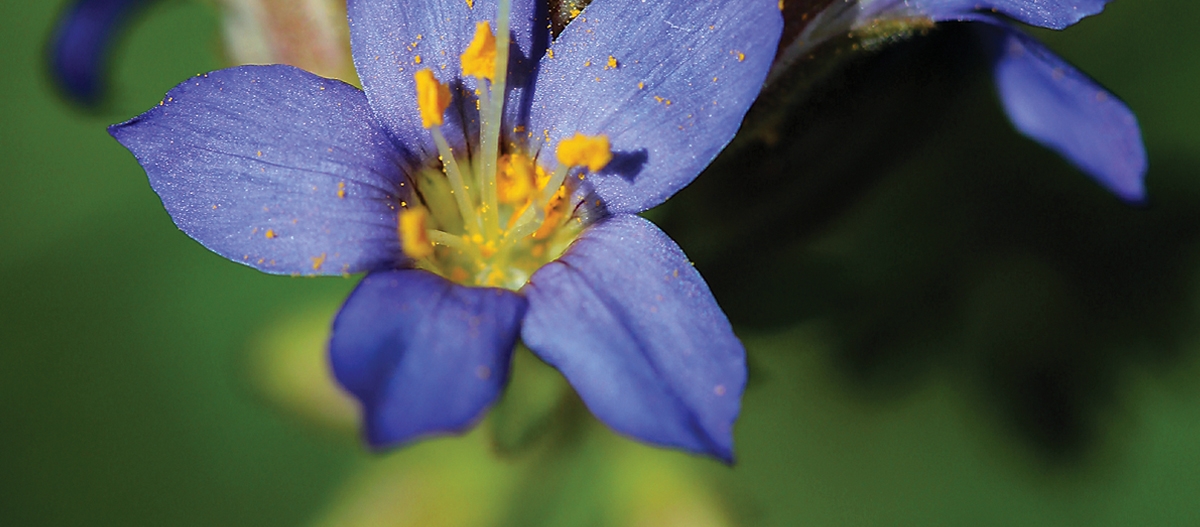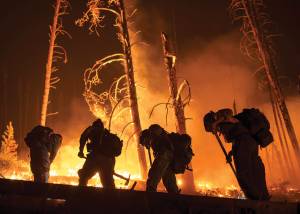By DIANNA TROYER
Intensely pink and irresistible to photographers, the half-dollar-sized tufted evening primrose lives a short and lovely life. Its four white heart-shaped petals blossom in the evening, turn a deep pink and by the next morning will have shriveled.
Photographing primroses and other wildflowers has offered countless unforgettable take-your-breath-away moments for two first-time photographers, 83-year-old Idaho authors and childhood friends: retired missionary Sharron Larter Akers and retired high school English teacher Sharon Phillips Huff.
Like blossoming flowers, they have transformed and flourished pursuing their retirement hobby.
“When we started photographing wildflowers in 2009, we were clueless, then curious,” Huff said of their decade-long adventures in central Idaho’s scenic valleys near their hometown of Mackay. “Now, we’re completely captivated.”
Compelled to share their love of wildflowers, the friends wrote and illustrated Wondering about Wildflowers? A Wildflower Guide for the Northern Rocky Mountains. Published last year and available on Amazon, the 300-page, color-coded book shows nearly 500 plants in 1,400 photos.
They hope it will help flower aficionados solve the mystery of what they are looking at in central Idaho and Montana along the Lolo Trail and in Glacier, Yellowstone, and Grand Teton national parks.
“Most books have detailed descriptions of flowers but don’t have enough large, close-up photos to help identify the flowers,” Akers said. “Our book’s pages are 8-½ by 11 inches, so the photos are easy to see. The book is for beginners who want a clue as to what flower is in front of them.”
When they go out, they never know what they will find or what will happen. Like anglers with the motto “Never Enough, Never Big Enough,” there were never quite enough flowers to photograph despite countless back-road trips.
“We took dirt roads we never traveled on before in out-of-the-way places we probably shouldn’t have gone on, considering our age—but oh, the adventure of discovering beautiful, often short-lived wildflowers,” Huff said.
The rewards of discovery were worth the annoyances of dealing with flat tires and dead batteries in the backcountry and the discomfort of their sometimes creaky and uncooperative knees.
“Getting down on our knees and bellies is more and more of a problem, and getting back up more so,” Huff said. “We help each other up, use walking sticks, and laugh a lot, but it’s worth it.
There is nothing like discovering a Fairy Slipper Orchid or a Steer’s Head for the first time. Certainly, the shortness of life slapped us in the face, too, and woke us up to enjoying the here and now and appreciating the wonder of it all.”
Akers said, “We laugh about our age and immobility, but we’re grateful to be out here seeing so many flowers. To me, each flower is a lovely creation by God with its own special beauty. Some grow in such inhospitable places, like the delicate Tufted Evening Primroses we found in gravel beside a road.”
For an unforgettable 80th birthday present, Huff’s daughter-in-law, Gwen, took her to the City of Rocks National Reserve near the Idaho/Utah border, to search for Steer’s Head. Growing only about 2-inches tall, the tiny perennial, with petals ranging from purple to pink, blooms about a month after snow melts in early spring. The central petals look like a steer’s head, while the two recurved outer petals look like the horns.
“We couldn’t find it and were so grateful the superintendent, Wallace Keck, showed us where it was growing,” Huff said. “We found out he loves wildflowers, too, so he contributed an Anderson’s Buttercup photo to our book. The next year, we were excited to find Steer’s Head closer to home, growing on Tom Cat Hill at Craters of the Moon National Monument.”
While photographing and identifying wildflowers, the self-described amateur botany enthusiasts sought the advice of experts, including Dr. Stephen Love, a horticulturist for the University of Idaho’s Aberdeen Research and Extension Center.
“Without his patient help, we would have given up long, long ago,” Huff said. “He dragged us up the learning curve, corrected our mistakes, and taught us that leaves are as important as flowers in identification.”
A plant expert, Dr. A. Scott Earle, was so impressed with one of their discoveries—a rare variety of Bessey’s crazyweed (Oxtytropis Besseyi var. salmonensis) found in Malm Gulch south of Challis—that he chose it for publication in his last edition of “Idaho Wildflowers.”
Considering so many wildflower experts paid it forward and shared secrets with Akers and Huff, they share and summarize seven of their favorite places with directions and what to find there. Blazing Star, Primrose, and Bitterroot bloom at Bayhorse near Challis. The speckled light brown Leopard Lily abounds at Double Springs north of Mackay. The dime-sized Wood Nymph, commonly known as One-flower Wintergreen, with its delicate five white petals that make it look like a star, thrives at a swampy area up Antelope at Iron Bog.
As for favorite flowers, Huff said she loves the creamy, three-petaled Mariposa lilies with their burgundy center.
“But then, blazing stars grab my heart as do the primroses, bitterroot, and shooting stars. There’s so much beauty out there waiting to be discovered.”
Wherever the friends go, they remember their motto about Idaho’s state flower and any flower for that matter. “Stop and Smell
the Syringa!” — ISI









